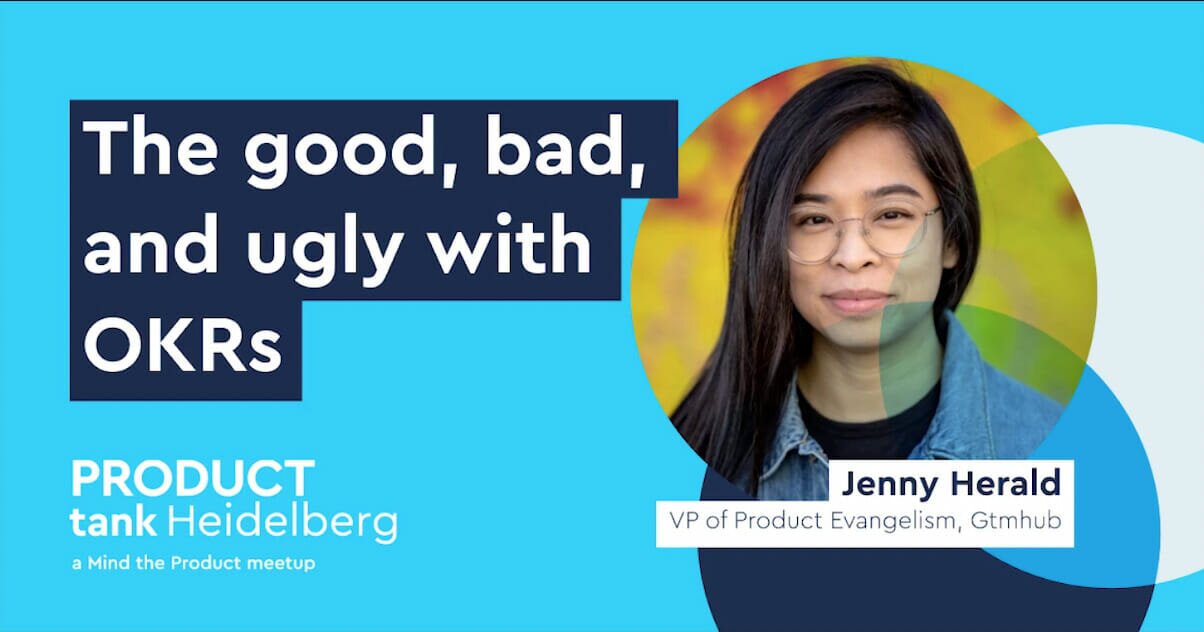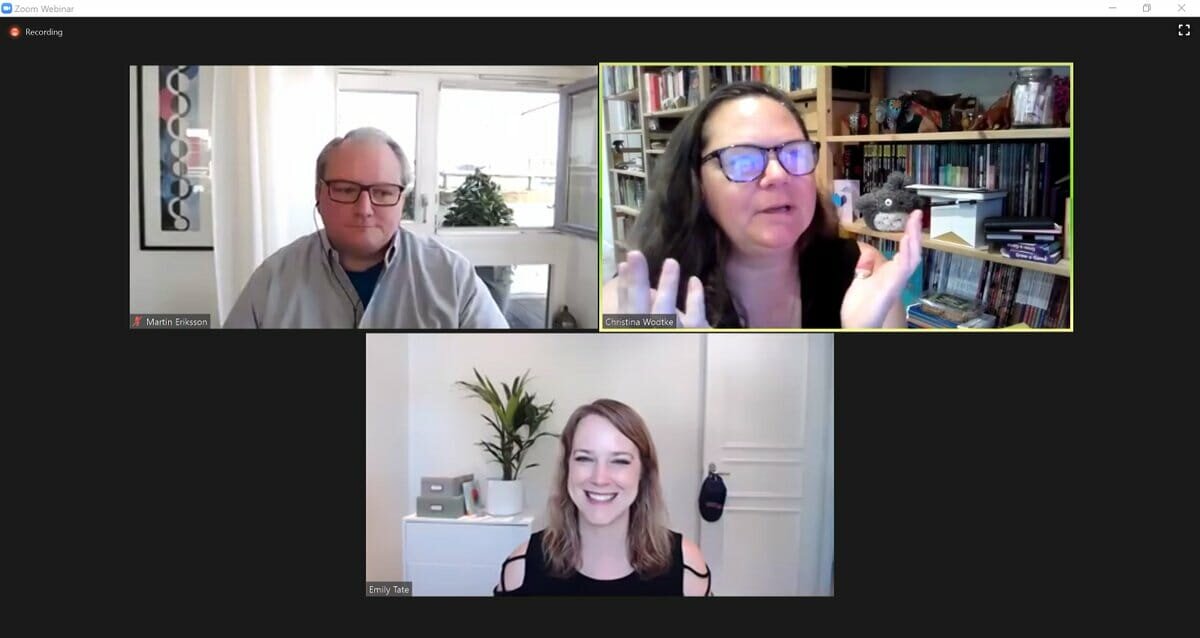In this ProductTank Heidelberg talk, Tim Herbig, a product management coach and consultant, provides a sandwich model to implement product strategy effectively.
Watch the session in full or read on for key points:
- Ingredients of the Sandwich Model
- How to identify the right North Star Metric
- Formulating an Integrated Product Strategy
- How to implement a product strategy using OKRs
Ingredients of a sandwich
Tim starts by breaking down the ingredients of the sandwich model, which consist of:
- North Star Metric (NSMs): a metric that captures the core value a product delivers to a customer.
- Product strategy: A time-bound roadmap that requires making specific decisions around the important aspects of a strategy.
- Objectives and Key Results (OKRs): A goal-setting framework that helps businesses track progress at a specific point in time through holistic metrics to effectively implement a strategy.
How to identify the right North Star Metric
There are two ways to identify a North Star Metric that captures the core value a product delivers to a customer, including:
- Bottom-Up Approach: Develop a KPI Tree by mapping out all the tactical KPIs you are using at the moment, then gradually move on to business KPIs and technical KPIs. Eventually,you will find your way to the North Star Metric. The purpose of mapping them out is to understand why you are measuring them and if there is a pattern among them.
- Top-Down Approach: Start with the product vision. Product vision is a long-term goal that defines the future state of the product, who the customers are, and how the product will meet their needs. A common attribute between product vision and the North Star metric is "customers". Once you've defined the product vision, you can effortlessly identify a North Star metric that reflects the progress your product makes in terms of delivering value to your customers.
Formulating an integrated product strategy
There are several choices that could contribute to the North Star metric. Product strategies act as tools to pick up the choices that align with the North Star metric.
A good place to start formulating a product strategy is by understanding the definition from Roger Martin’s book Playing to Win: “A strategy is an integrated set of choices that position you on a playing field chosen based on vision and goals in a way that you win”. “No matter which framework you are using, this is what strategy is supposed to do”, Tim explains.
Tim also mentions a list of pre-existing product strategy patterns that could be taken into consideration when developing product strategy, including:
- Product vision
- Core value of your product
- Buyer segments you're aiming for
- Problem you are trying to solve
- Alternatives present in the market
- Ways your product differentiates from your competitors.
- Channels of distribution
It's crucial to monitor the influence of these patterns on each other to develop an effective product strategy.
How to implement product strategy using OKRs
“The key aspect of using OKR goals in general is to implement product strategy," says Tim.
To do that, start converting the product strategy pattern you have chosen during the product strategy phase into a proxy metric. The benefit of doing this is to understand whether the choices are effective.
Usually, proxy metrics are lagging indicators. The issue with lagging indicators is that they produce results at a slow rate, which creates an unfavourable situation if you want weekly feedback.
To identify leading indicators, figure out which feature your customers are adopting and reverse from there to identify common patterns in the decision-making process.
The key takeaways from this talk, are that product strategy by itself cannot lead to successful outcomes in today's dynamic marketing environment. It takes collaboration between goals and strategies to build a feasible roadmap that eventually leads to producing products that your customers love.
ProductTanks are informal meetups, created by Mind the Product, to bring local product people together and to enable speakers to share amazing product insights. Learn more about ProductTank here!






